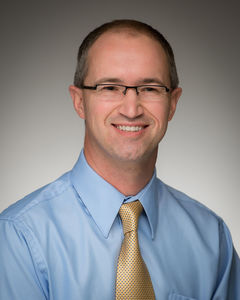Ryan Roeder

Professor of Aerospace and Mechanical Engineering, Bioengineering Graduate Program
University of Notre Dame
Molecular Imaging of Cancer Using Nanoparticle Probes for X-Ray Imaging
Dr. Roeder’s lab is investigating nanoparticle probes for molecular imaging of cancer using contrast-enhanced mammography, computed tomography (CT), and photon-counting spectral (color) CT. Molecular imaging offers the ability to target and identify tumors, specific cancer cell populations (e.g., HER2+ breast cancer cells, cancer stem cells, etc.), and associated abnormalities (e.g., breast microcalcifications) for improved diagnosis and monitoring therapeutic response. The use of X-ray imaging modalities provides a relatively low-cost and widely-available translational pathway. Core-shell nanoparticles provide a powerful platform for designing customized imaging probes for strong X-ray contrast, biostability/biocompatibility, multi-modal/multi-agent imaging, and targeted delivery.
For example, bisphosphonate-functionalized gold nanoparticles are being investigated for targeting and detecting breast microcalcifications, which are the most common abnormality detected in mammographic screening of breast cancer. This approach would improve and expand the capability of established and successful clinical methods for early detection, leading to a strong potential for translation from the laboratory to the clinic. Immunoconjugated gold-silica core-shell nanoparticles are being investigated for targeting, identifying, and quantifying using in vitro models and xenograft tumor models. A spectral library of nanoparticle contrast agents is also being investigated for multi-agent imaging and quantitative molecular imaging with photon-counting spectral CT, which could enhance the detection of tumors, tumor vasculature, and metastatic disease within regional lymph nodes, resulting in significantly improved cancer diagnosis, treatment, and prognosis.
Dr. Roeder’s other research interests include biomaterial scaffolds for bone regeneration and orthopaedic implant fixation, as well as bone tissue mechanics and mechanobiology.